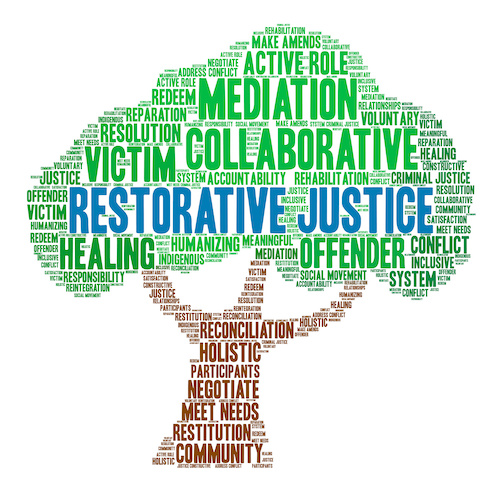Educators are embracing restorative justice practices to facilitate safe and relational school environments and address inequities in school disciplinary practices. Research-based guidance offers insights on how to structurally support educators through restorative justice implementation, and there are resources for teachers and support staff as they integrate restorative practices into their roles.
Educators play an important role in restorative justice (RJ) implementation–they are often tasked with ensuring that RJ practices are implemented in classrooms, and they engage in many of the day-to-day interpersonal RJ practices. Because transitioning to RJ is a long and challenging process, it is necessary to provide educators with resources that can help them along the way. Without these broader systemic supports, it is possible that RJ programs may not be equipped to be successful in the long term.
With the need for systemic support for educators in mind, here are some ways to support educators in playing an active role in the development and implementation of RJ programs.
1. Provide educators with training, coaching, and resources to recognize their roles within their school.
To start, it’s important for educators to recognize their role within their school systems, the power they wield, and how to incorporate RJ into their role. To support this growth, consulting and partnering with RJ experts through professional development trainings and coaching services can help educators navigate the transition to RJ.
If the resources allow, it may also be effective to have a full-time staff member or teacher on special assignment dedicated to supporting educators in a school district. Additionally, guided workbooks like Restorative Practices at School are useful tools for educators to reflect on their journey and circumstances that many may face when beginning to incorporate restorative practices at school
2. Make RJ part of the norm, not an afterthought
In the worst instances, implementing RJ may become another large initiative that teachers are asked to embrace, which can feel burdensome amidst all the expectations that educators are navigating. Because of this challenge, it is important to find ways (when possible) to integrate RJ practices into standard practice rather than designing practices that feel like additional activities that are difficult to schedule. To assist with this, digital platforms like Amplify RJ have curated workshops, resources, and ongoing discussions with RJ practitioners to share ideas about how to integrate restorative practices into daily practice.
3. Trust, buy-in, and power sharing are essential
Most importantly, it is crucial that educators are systemically supported and can lean on one another in the implementation of RJ. This means transitioning from a traditional top-down implementation approach and building the infrastructure for an approach that incorporates more input from educators, students, and families in addition to administration.
For educators, this means building trust and capacity among staff to practice RJ with other adults in their schools, because building a commitment to RJ involves all stakeholders, not just those involved in cases where conflicts with students arise. Building the appropriate trust may take time, but it will also help prevent RJ from becoming siloed among a small handful of educators. Building trust may also assist you in navigating challenges or uncomfortable moments during the implementation process.
Work worth doing
At their core, RJ practices are aligned with many of the values that educators already share. The difficulty is recognizing that RJ may look and feel different to each person and, thus, should not be thought of as a one-size-fits-all philosophy. Because of this, committing to RJ is committing to a process of growth whereby learning and direction are shaped, in part, by all stakeholders. For educators, this means it is important to design systems in ways that encourage and reinforce this shift in operating, along with developing the appropriate trust and infrastructure to assist with integrating RJ into your day-to-day practices.
Related:
3 ways educators can embrace and enable inclusive programming
How to foster antiracist learning environments in schools
- 4 ways to encourage play in education - April 25, 2024
- CoSN IT Leader Spotlight: Lisa Higgins - April 25, 2024
- It’s time to pay student teachers - April 25, 2024

